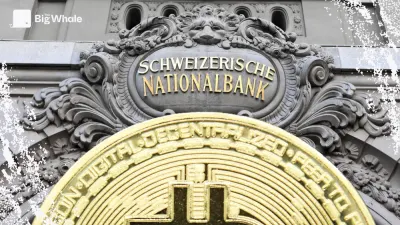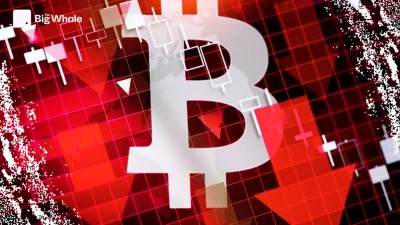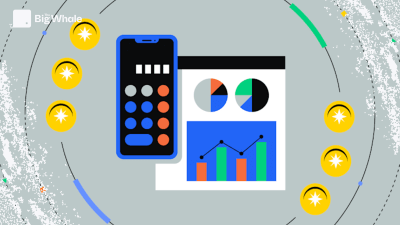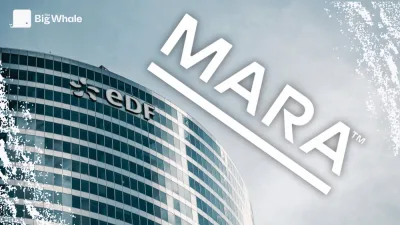TBW - Jørgen Ouaknine (Euroclear): "We are very much in demand from crypto players".
"We are very much in demand from crypto players".

The Big Whale: Euroclear is one of the world's leading providers of securities settlement services. What is your approach to blockchain technologies?
Jørgen Ouaknine: We have been exploring these technologies for several years now. An important step was taken about a year ago with the launch of our Digital Financial Market Infrastructure (D-FMI) platform.
This platform enables us to address the primary market using blockchain. Via the platform, our customers have access to the entire secondary market, solving the liquidity problem. This system makes it very easy to buy tokenised assets.
Blockchains like Ethereum also settle billions of dollars worth of assets, but automatically. Ultimately, do you see them as a threat?
To put things in perspective, Euroclear is a market infrastructure that holds nearly €40,000 billion in assets on behalf of its customers. Every year, we handle the equivalent of 10 times the world's GDP and carry out one million billion (quadrillion) transactions!
Our position is therefore unique and systemic since we are central and neutral in an ecosystem where we connect a range of intermediaries, both issuers and investors.
Simply put, we help to ensure that transactions run smoothly, in particular through asset custody or access to liquidity.
These orders of magnitude illustrate the considerable impact of our activities. It's important to understand that there is a gulf between a start-up fintech and a market infrastructure. These are very different worlds today.
With regard to Ethereum, we are obviously keeping a close eye on this blockchain, which is the most widely used in the crypto market for settlement-delivery. But in the short term, we can't talk about a potential threat.
Why?
It's very simple: our role is to be a regulated trusted third party that ensures three essential things. Firstly, the confidentiality of transactions. Secondly, that they comply with all applicable regulations. And finally, the purpose of each transaction. Whatever the infrastructure of tomorrow, the market will always need trusted players like Euroclear.
If you look at public blockchains like Ethereum today, they simply cannot offer all these guarantees simultaneously, at least for the time being.
And that's without mentioning volumes: they are still far from being able to handle all the flows managed on a daily basis in traditional finance. This scalability has yet to be demonstrated, especially when confidentiality features such as encrypted data are added. In my view, this is a real challenge.
Today, the real challenge for regulated institutions like ours is to keep pace with innovation. This is true for the blockchain universe as it is for other innovations around AI and quantum, for example. As a regulated institution, our pace of innovation and adoption of innovation is more gradual to enable implementation that offers all the necessary guarantees to the ecosystem.
You mention the regulatory aspect. But aren't you concerned that potential regulatory changes in the United States with the election of Donald Trump could create a competitive disadvantage for Europe?
For the moment, we can't predict any changes, but we can clearly see that there will be a flurry of activity that we'll need to monitor closely.
For things to work, regulation, technology as well as customer demand need to be mature at the same time. This will also apply to crypto.
In fact, Europe and the UK are also currently booming in terms of experimentation. In Europe, the Pilot Regime is an interesting scheme because it allows both traditional players and new entrants to test the value of blockchain around three activities: trading, settlement as well as a vertical that combines the two.
The Pilot Regime is still struggling to convince at European level. So far, very few experiments have been launched. How do you explain this?
Many players have developed projects in parallel with the Pilot Scheme and have decided to focus their efforts on use cases that can generate value in the short term.
Then, the barrier to entry may seem high for new players entering this market. But the Pilot Scheme has already considerably lowered the regulatory barriers. Should we go further? I think we now need to find the right balance. There are now several licences being granted, so let's see how things develop.
Do you think you've gone far enough with the experiments? Wouldn't the creation of a dedicated subsidiary, along the lines of SG-Forge at Société Générale, be a good way of extending your tests on public blockchains?
We are currently working on the next stages of our strategy around digital assets, in consultation with the market. In this context, we are not ruling out any possibility.
What are your links with the major players in the crypto ecosystem?
We get a lot of requests. Every day, we receive requests from crypto players and decentralised finance (DeFi) players in general who want to collaborate with us to use our rails with their innovation.
There is now a growing interest among crypto players in RWAs (Real World Assets). Currently, the vast majority of crypto volumes involve Bitcoin. But compared with traditional finance volumes, this remains marginal.
Some players who want to accelerate their growth want to pivot or simply move closer to traditional finance. There will undoubtedly be a phase of convergence between these two universes.
But to work with us, it is necessary to satisfy our Digital Asset Securities Control Principles (DASCP), which include being regulated, having a sufficiently secure asset custody arrangement, or generally presenting a resilient structure. Today, very few players in the DeFi world are capable of meeting all these requirements.
You have taken part in several market experiments, notably with Chainlink, the largest provider of oracles (data in particular, ed. note) for the crypto ecosystem. What is the focus of your work?
Effectively. We sometimes take part, particularly with Chainlink, in market experiments, in particular around securities transactions, because their technology makes the process more efficient by eliminating certain tasks.
More specifically, it makes the reconciliation process smoother in particular. With a blockchain system, it is possible to send a single message validated by consensus. This reduces risk and cost while improving the user experience.
These experiments have shown us that it is possible to bring efficiency to processes and optimise our current financial infrastructures.
This work is also helping us to identify the right timing for developing these connections. Many experiments carried out by market infrastructures around the world have not met with the expected success, either because the technology was not ready, or because the ecosystem was not ready to adopt this new technology at the speed and scale proposed. But also because there wasn't enough value creation at that stage.
This period of experimentation showed that the market could get into fighting order and participate in the collective innovation effort. But it also showed that the more isolated and unlisted the initiatives, the less likely they were to succeed.
Does the €100 million issue by Caisse des Dépôts via your D-FMI platform and that of the Banque de France, with the participation of major French banks such as BNP Paribas, illustrate this desire for collaboration?
I would even say that the players need to collaborate with each other. This is a time when the entire market needs to experiment in a coordinated way to find solutions, rather than being isolated and fragmented.
In fact, this experiment was conducted under the aegis of Paris Europlace, an association that brings together more than 600 players in the French financial ecosystem.
What do you see as the horizon for the hybridisation of digital assets and traditional finance?
We have just come to the end of an initial period of experimentation. I think it's possible to envisage this hybridisation within 5 years.
But the transition won't happen overnight. One of the challenges will be to organise the cohabitation, for a time, between traditional and tokenised assets.
Do you one day expect to support transactions including Bitcoin or other cryptocurrencies such as Ether?
More and more institutional clients are using the main cryptos such as Bitcoin and Ether and are requesting services around these assets. If the regulatory conditions are met, this is undoubtedly an area to explore more closely.
But today, this is not yet on the agenda. As a regulated market infrastructure, we only deal with regulated assets.
As a major player in the traditional financial system, how do you perceive Bitcoin and its emerging status "digital gold"?
It's fair to say that bitcoin occupies a prominent place in the crypto ecosystem. We are seeing more and more players in traditional finance creating instruments such as Bitcoin ETFs that circulate in the traditional economy. Outside that framework, bitcoin is not an asset that falls within the scope of our business today.
You recently invested in MarketNode, which is a market infrastructure for digital assets. What is the logic behind this decision?
Asia is a strategic market for us. As part of our development on this continent, MarketNode represents one of our first major investments.
This platform offers solutions in the field of funds and loans, and benefits from solid reference shareholders. We see this as a particularly promising position for developing innovative solutions in the world of digital assets.
What is the size of your team dedicated to these projects?
Our approach to these issues is mainly cross-functional. The size of the teams varies. When we are in the development phase, several dozen people are involved. In normal times, the team numbers around ten.



